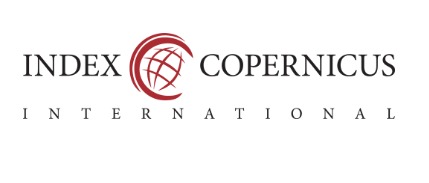The politics of tourism representations: Discourse analysis of British travel brochures about incredible India
Abstract
Aim: This research examines how India has been portrayed in UK travel brochures. This research aims to analyze travel brochure portals in terms of both their content and their overall context.
Methodology: A qualitative approach informed by an interpretive paradigm was used for this study. The researchers used a systematic sampling strategy to collect the information. Techniques from the field of discourse analysis were used to examine the data.
Findings: This research offers a glimpse into how British tourism literature portrays India for potential visitors. This analysis sheds light on why the projections based on the country’s current geopolitical power and economic growth don’t add to the full picture.
Novelty/Implications: Even though India is now widely acknowledged as a major global power, this study also supports the stereotype of India as a backward, orientalism-laden, colonial relic.
References
Berger, A. A. 2004. Deconstructing Travel: Cultural Perspectives on Tourism. Walnut Creek, CA: Altamira Press.
Bhattacharyya, D. P. 1997. “Mediating India: An Analysis of a Guidebook.” Annals of Tourism Research 24(2): 371-389.
Brown, G., and Giles, R. 1994. “Coping with Tourism: An Examination of Resident Responses to the Social Impact of Tourism” in Tourism in the State of the Art. Chichester, UK: Wiley.
Bunchutrakun, C., Lieungnapar, A., Wangsomchok, C., and Aeka, A. 2016. “A Corpus-Based Approach to Learning a Tour Guide Talk.” International Journal of Humanities, Arts and Social Sciences 2(2): 58-63.
Chatelard, G. 2005. “Desert Tourism as Substitute for Pastoralism? Tuareg in Algeria and Bedouin in Jordan.”pp. 755-764 in Nomadic Societies in the Middle East and North Africa: Entering the 21st Century. Boston, MA: Brill.
Dann, G. 1996. The Language of Tourism: A Sociolinguistic Perspective. Wallingford, UK: CABI Publishing.
Dwivedi, M., Shibu, T. P., and Venkatesh, U. 2007. “Social Software Practices on the Internet: Implications for the Hotel Industry”. International Journal of Contemporary Hospitality Management 19(5): 415-426.
Echtner, C. M., and Prasad, P. 2003. “The Context of Third World Tourism Marketing.” Annals of Tourism Research 30(3): 660-682.
Fakharyan, M., Jalilvand, M. R., Elyasi, M., and Mohammadi, M. 2012. “The Influence of Online Word of Mouth Communications on Tourists’ Attitudes Toward Islamic Destinations and Travel Intention: Evidence from Iran.” African Journal of Business Management 6(38): 103-181.
Francesconi, S. 2011. “Images and Writing in Tourist Brochures.” Journal of Tourism and Cultural Change 9(4): 341-356.
Garrod, B., and Kosowska, A. 2012. “Destination Image Consistency and Dissonance: A Content Analysis of Goa’s Destination Image in Brochures and Guidebooks.” Tourism Analysis 17(2): 167-180.
Govers, R., Go, F. M., and Kumar, K. (2007). “Virtual Destination Image a New Measurement Approach.” Annals of Tourism Research 34(4): 977-997.
Harvey, D. 1989. The Condition of Postmodernity. Cambridge, MA: Blackwell Publisher.
Hollinshead, K. (2004). “A Primer in on to Logical Craft.” pp. 63-82 in Qualitative Research in Tourism: On- tologies, Epistemologies and Methodologies, edited by J. Phillimore and L. Goodson. London, Uk: Rout- ledge.
Holloway, J. C. 2004. Marketing for Tourism. Harlow, UK: Pearson Education Ltd.
Hunter, W. C. 2008. “A Typology of Photographic Representations for Tourism: Depictions of Groomed Spaces.”Tourism Management 29(2): 354-365.
Kress, G., Leeuwen., T. V. 2001. Multimodal Discourse: The Modes and Media of Contemporary Communication. London, UK: Arnold.
Kress, G., and Leeuwen, T. V. 1996. Reading Images: The Grammar of Visual Design. New York, NY: Routledge.
Kunnu, W. 2016. “Foreign Tourists’ Satisfaction Towards Selecting the Accommodation Service (Hostel) in Bangkok.” International Journal of Humanities, Arts and Social Sciences 2(1): 40-44.
Loda, M. D. (2011). “Comparing Websites: An Experiment in Online Tourism Marketing.” International Journal of Business and Social Science 2(22): 70-78.
Luangsa, N. 2016. “Guideline in Developing a Tourism Route: A Case Study of Tambon Bang Nok Khwaek, Samutsongkharm Province.” International Journal of Humanities, Arts and Social Sciences 2(3): 101-104.
Morgan, N. and Pritchard, A. 1998. Tourism Promotion and Power: Creating Images, Creating Identities. Chichester, UK: John Wiley and Sons Ltd.
Mowforth, M., and Munt, I. 1998. Tourism and Sustainability. New Tourism in the Third World, London, UK: Routledge.
Nasser, M. A. 2017. “The Application of Local Productive Iystem (Industrial District) in the Tourism Activities.”International Journal of Humanities, Arts and Social Sciences 3(1): 27-30.
Parameswaran, R. 2002. “Local Culture in Global Media: Excavating Colonial and Material Discourses in National Geographic.” Communication Theory 12(3): 287-315.
Pathumporn, J., and Nakapaksin, S. (2015). “Participatory Action Research Model for Sustainable Community Based Tourism Development.” International Journal of Business and Administrative Studies 1(3): 89-93.
Pritchard, A., and Morgan, N. (2003). “Mythic Geographies of Representation and Identity: Contemporary Post- Cards of Wales.” Journal of Tourism and Cultural Change 1(2): 111-130.
Quyen, L. T. T. (2017). “Influenced Factors for Ecotourism Development at Phong Dien District, Can Tho City, Vietnam.” International Journal of Humanities, Arts and Social Sciences 3(3): 106-112.
Reimer, G. D. (1990). “Packaging Dreams: Canadian Tour Operators at Work.” Annals of Tourism Research 17(4): 501-512.
Said, E. 1978. Orientalism: Western representations of the Orient. New York, NY: Pantheon.
Saga Travel Brochure 2017. “Varanasi Tours, Vacation Packages & Travel Experiences.”Retrieved Jan 21, 2017 https://goo.gl/xpTZbP
Scarles, C. (2004). “Mediating Landscapes: The processes and Practices of Image Construction in Tourist Brochures of Scotland.” Tourist Studies 4(1): 43-67.
Schwandt, T. A. 2001. Dictionary of Qualitative Inquiry. Thousand Oaks, CA: Sage Publications.
Urry, J. (1992). “The Tourist Gaze ‘Revisited’”. American Behavioral Scientist 36(2): 172-186.
Vaill, P. B. 2017. “Let Us Now Praise Jerry B. Harvey-The Down Home scholar.” Journal of Management, Spirituality & Religion 14(2): 105-108.
Wolcott, H. F. (1990). “Making a Study ‘More Ethnographic’.” Journal of Contemporary Ethnography, 19(1):44-72.
World Trade Report 2013. “Factors Shaping the Future of World Trade.” Retrieved May 22, 2016 (https://goo.gl/dSi2k6).

This work is licensed under a Creative Commons Attribution-NonCommercial 4.0 International License.












.png)










